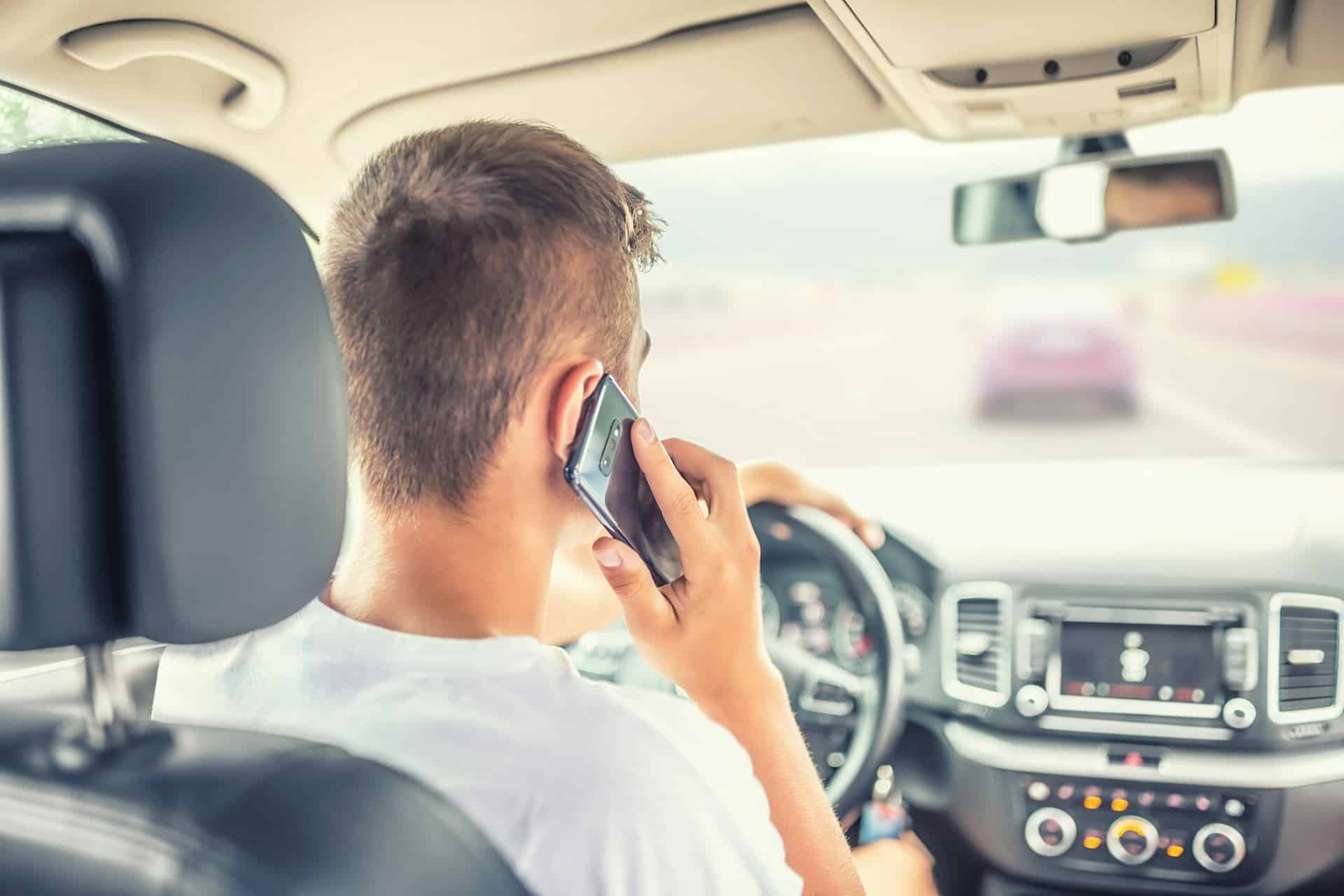Teenage driving is a significant milestone, symbolizing independence and the freedom to explore new horizons. However, this freedom comes with substantial risks that are often underestimated by both teens and their parents.
Understanding these risks is essential to ensuring the safety of young drivers and those who share the road with them.
The following guide provides a comprehensive overview of the most pressing dangers associated with teenage driving and offers insights into how these risks can be mitigated.
Factoid About Teen Driving Accidents in the US
| Statistic | Value | Details |
|---|---|---|
| Total Teen Driver Fatalities (2019) | 2,400 | Leading cause of death for teens in the U.S. |
| Teen Crash Rate vs. Adult Crash Rate | 3x Higher | Teen drivers are three times more likely to be involved in a fatal crash than drivers aged 20 and older. |
| Percentage of Fatal Crashes Involving Speeding (16-19 age group) | 31% | Speeding is a major factor in fatal crashes among teens. |
| Impact of Graduated Driver Licensing (GDL) Programs | 50% Reduction | GDL programs have reduced teen crash rates by up to 50%. |
| Teen Drivers’ Use of Seat Belts | 57% (Low Usage) | Teens have the lowest rate of seat belt use among all age groups. |
| Percentage of Teen Driving Fatalities Involving Alcohol | 24% | Nearly a quarter of teen driving deaths involve alcohol use. |
| Crashes Due to Distraction (16-19 age group) | 10% of Fatal Crashes | Distraction is a leading cause of accidents, with mobile phones being a major contributor. |
| Teen Crash Risk During First Year of Driving | 1 in 5 | One in five 16-year-old drivers has an accident within their first year of driving. |
| Cost of Teen Driving Accidents (Annual) | $26 Billion | Total economic impact of crashes involving teen drivers. |
| Reduction in Nighttime Fatal Crashes due to GDL Restrictions | 40% Reduction | GDL restrictions have significantly reduced nighttime crash fatalities among teens. |
Understanding the Risks of Teenage Driving
Teenagers are at a much higher risk of being involved in serious or fatal car accidents compared to more experienced drivers.
This increased risk is due to a combination of factors, including a lack of driving experience, susceptibility to distractions, and a tendency toward risk-taking behavior.
By examining these factors closely, we can better understand why teenage drivers are more vulnerable on the road and what steps can be taken to protect them.
Lack of Driving Experience Leading to Higher Crash Rates
Teens often lack the experience needed to make quick, sound decisions behind the wheel. This inexperience can lead to higher crash rates, especially in situations that require split-second judgments.
For example, a teen may not know how to react when another driver suddenly stops or when road conditions change abruptly.
Common Critical Errors
Teen drivers are prone to making critical errors due to their inexperience and often impulsive behavior. These errors can lead to serious accidents, making it essential to understand and address them.
- Distraction
- Speeding
- Lack of Hazard Scanning
Addressing these critical errors through education and practice can help teens become more aware of the risks and better prepared to handle the challenges of driving.
By focusing on these areas, we can reduce the incidence of teen driving accidents and improve overall road safety.
The Role of Immaturity and Risk-Taking Behavior
Immaturity and a propensity for risk-taking significantly increase the danger of teenage driving.
Teens are more likely to engage in reckless behaviors, such as speeding or driving under the influence, without fully understanding the potential consequences. This immaturity can lead to poor decision-making and, ultimately, accidents that could have been avoided.
The Impact of Peer Pressure and Passengers on Driving Behavior
Peer pressure can dramatically affect a teen’s driving behavior.
When driving with friends, teens may feel compelled to take risks they wouldn’t take if they were alone. This can include speeding, showing off, or ignoring traffic laws—behaviors that increase the likelihood of an accident.
Common Causes of Teen Driving Accidents
Teen driving accidents are unfortunately common, and the causes are often preventable. Understanding these causes is crucial for reducing the number of crashes involving young drivers.
From distractions to driving under the influence, the factors that contribute to teen accidents are varied, but they all share a common thread: inexperience and a lack of full awareness of the risks involved.
Distracted Driving: Mobile Phones, Passengers, and Other Distractions
Distracted driving is a major concern when it comes to teenage drivers.
Distractions can come in many forms, from the constant lure of mobile phones to the presence of chatty passengers.
Each distraction takes a teen’s focus away from the road, increasing the likelihood of accidents.
Understanding the various sources of distraction is key to mitigating this risk and encouraging safer driving habits among teens.
- Mobile Phones
- Passengers
- Adjusting In-Car Controls
- Eating or Drinking
- External Distractions
- Grooming
- Emotional Distractions
- Daydreaming
- Interacting with Passengers
Minimizing these distractions is crucial to improving the safety of teenage drivers. By recognizing the various sources of distraction, both teens and parents can take proactive steps to reduce the risk of accidents.
Speeding and Failure to Control the Vehicle
Speeding is another major factor contributing to teen driving accidents.
Teens often underestimate the dangers of driving at high speeds and overestimate their ability to control the vehicle.
The faster a car is going, the less time a driver has to react to unexpected situations, such as a pedestrian crossing the street or a car stopping suddenly. In addition, high speeds increase the severity of crashes, leading to more serious injuries or fatalities.
For many teens, the thrill of driving fast can override their understanding of the risks involved, leading to dangerous situations that could easily be avoided by adhering to speed limits and driving cautiously.
Driving Under the Influence of Alcohol or Drugs
Driving under the influence of alcohol or drugs is a significant risk factor for teen drivers.
Despite the legal drinking age being 21, many teens experiment with alcohol and drugs, often without fully understanding the impact these substances can have on their ability to drive.
Even small amounts of alcohol can impair judgment, slow reaction times, and reduce coordination—all of which are essential for safe driving.
When combined with the inexperience that comes with being a new driver, the results can be catastrophic.
It’s important for teens to understand that driving under the influence not only puts their own lives at risk but also endangers the lives of others on the road.
Inconsistent Seat Belt Use
Seat belts are one of the simplest and most effective ways to protect drivers and passengers in the event of a crash.
However, teens often neglect to wear seat belts consistently, either because they underestimate the importance of this safety measure or because they feel invincible behind the wheel.
Statistics show that teens have the lowest rate of seat belt use compared to other age groups, which contributes to the high fatality rates in teen driving accidents.
Wearing a seat belt should be a non-negotiable habit for all drivers and passengers, as it can significantly reduce the risk of injury or death in a crash.
Preventative Measures for Reducing Teen Driving Risks
Reducing the risks associated with teen driving requires a proactive approach that involves both education and practical measures. These preventative steps can help teens develop safer driving habits, which in turn can lead to fewer accidents and fatalities on the road. Parents, educators, and the teens themselves all play a crucial role in this process.
The Benefits of Graduated Driver Licensing (GDL) Programs
Graduated Driver Licensing (GDL) programs are designed to give new drivers the opportunity to gain experience under lower-risk conditions. These programs typically involve three stages: a learner’s permit, an intermediate license, and finally, a full license.
The GDL system helps teens gradually build their driving skills while minimizing exposure to high-risk situations, such as night driving or driving with multiple passengers.
Studies have shown that GDL programs can reduce crash rates among teen drivers by as much as 50%.
By extending the learning period and placing restrictions on high-risk driving behaviors, GDL programs offer a structured and safer path to becoming a fully licensed driver.
Importance of Parental Involvement and Monitoring
Parents play a vital role in shaping their teen’s driving habits.
Active involvement in the learning process can significantly improve a teen’s ability to handle the responsibilities of driving.
This can include supervising practice driving sessions, discussing the importance of safe driving behaviors, and setting clear rules about when and where the teen is allowed to drive.
Moreover, parents should monitor their teen’s driving through tools like in-car monitoring systems or mobile apps that track driving habits.
These tools provide real-time feedback and can help identify risky behaviors before they lead to an accident.
Setting a good example by practicing safe driving behaviors yourself is also essential—teens are more likely to adopt safe practices if they see their parents doing the same.
Educating Teens on the Consequences of Risky Driving
Education is key to helping teens understand the serious consequences of risky driving.
Many teens may not fully grasp the potential outcomes of behaviors like speeding, driving under the influence, or not wearing a seatbelt.
Schools, community programs, and even law enforcement agencies offer educational programs that focus on the dangers of reckless driving and the importance of making smart decisions behind the wheel.
These programs often include real-life stories from individuals affected by teen driving accidents, which can have a powerful impact on young drivers.
By reinforcing the message that every decision on the road matters, these educational efforts can help reduce risky driving behaviors.
Setting Ground Rules and Expectations for Safe Driving
Clear communication of ground rules and expectations is crucial for teens as they begin to drive independently.
Parents should establish non-negotiable rules, such as always wearing a seatbelt, not using a phone while driving, and obeying speed limits.
Additionally, setting expectations about curfews, the number of passengers allowed in the car, and restrictions on nighttime driving can further reduce risks.
It’s important for teens to understand that these rules are in place not just to limit their freedom, but to ensure their safety and the safety of others on the road.
Consistent enforcement of these rules, along with positive reinforcement when rules are followed, can help teens develop responsible driving habits that last a lifetime.
Protecting Your Teen on the Road
Understanding the risks associated with teenage driving is crucial for ensuring the safety of your teen and others on the road.
If you’re concerned about the potential dangers your teen may face as a new driver, Crockett Law Group is here to help.
As a Santa Ana car accident lawyer, we offer legal guidance and support tailored to your needs.
For more information, call us at (800) 900-9393 to discuss how we can assist you in protecting your teen and navigating any legal issues that may arise.










